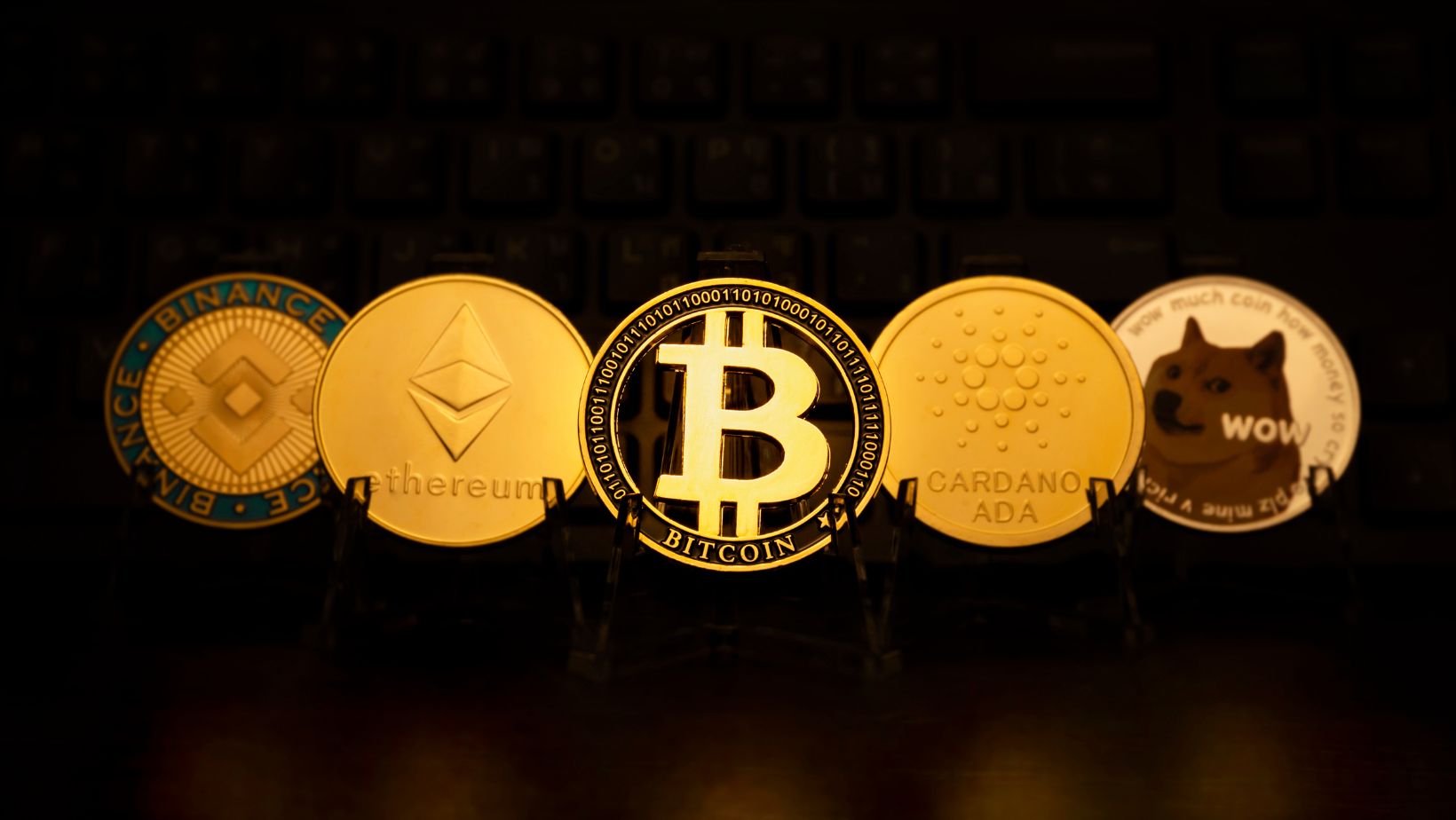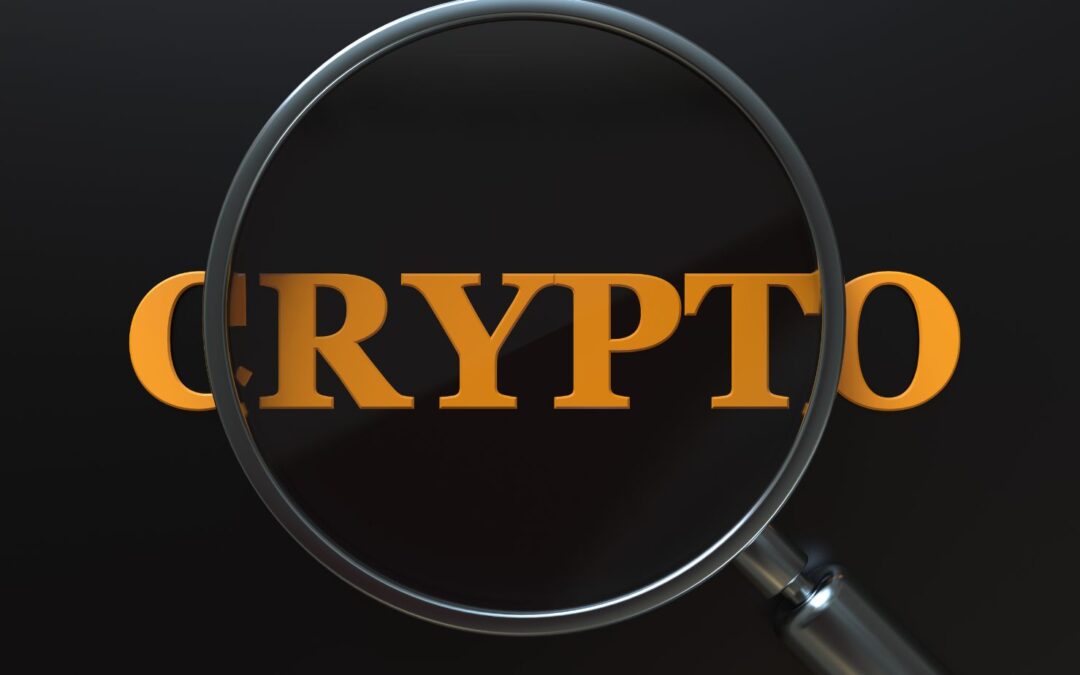Our comprehensive article covers a range of DeFi trends and projects, including the surge in real world asset tokenization, the integration of AI in DeFi for data security, and the rise of privacy-focused coins like XMR, RAIL, and ZEC. Additionally, it highlights leading DeFi platforms such as Uniswap, Compound, Aave, MakerDAO, and Yearn Finance.
Decentralised Finance Trends
As the DeFi space continues to evolve, one of the hottest trends is the integration of non-fungible tokens (NFTs) into DeFi platforms. You might be wondering, what are NFTs all about and how are they being incorporated into decentralised finance?
Well, think of NFTs as special digital items that cannot be exchanged on a one-to-one basis, unlike cryptocurrencies or other tokens. They represent unique digital assets such as art, collectibles, virtual real estate, and more. In the DeFi world, these NFTs are being utilised in innovative ways. For instance, they can be used as collateral for loans or investments, enabling fractional ownership of high-value assets through onoxvo smart contracts. This integration brings a whole new layer of versatility and richness to the world of decentralised finance.
NFT Integration Benefits:
● Lending: NFTs can be used as collateral for loans, enabling users to unlock liquidity without selling their valuable digital assets.
● Collateral: By using NFTs as collateral, traditional financial barriers can be overcome, thereby expanding access to financial services.
● Fractional Ownership: Individuals can invest in high-value assets through fractional ownership facilitated by NFTs and smart contracts.
This trend not only showcases the creative potential within DeFi but also opens up exciting opportunities for individuals to leverage digital assets in previously unprecedented ways.
Moving on to another captivating trend in the realm of decentralised finance – cross-chain compatibility. Now, this may sound like something straight out of a sci-fi plot, but it’s actually redefining the way different blockchains connect and interact with each other.
Picture this: blockchain networks are like separate kingdoms with their own rules and regulations. Cross-chain compatibility serves as a bridge between these kingdoms, allowing assets to seamlessly move across different blockchains. The implications of this are quite profound.
Advantages of Cross-Chain Compatibility:
● Global Access: Users can access and utilise decentralised financial services across various blockchain protocols without facing restrictions imposed by individual networks.
● Increased Liquidity: Assets can move more freely across different chains, leading to enhanced liquidity and efficiency within decentralised finance.
● Diversification: Investors can diversify their portfolios by leveraging assets from multiple blockchains, reducing dependency on a single network.
For instance, imagine being able to invest in DeFi projects operating on Ethereum while still having assets on Binance Smart Chain. This level of flexibility and interconnectedness enhances user experience and expands the scope of decentralised finance on a global scale.
These trends underscore the dynamic nature of DeFi ecosystems and offer a glimpse into the innovative strides being made in the realm of decentralised finance. Keep reading as we uncover more compelling trends shaping the future landscape of DeFi in 2024.
Spotlight on DeFi Projects and Platforms
In the rapidly evolving landscape of decentralised finance (DeFi), certain projects and platforms have risen to prominence, drawing attention for their innovative solutions and impact on the market.

Let’s explore a few standout DeFi projects that are making waves and reshaping the future of finance.
Uniswap: Revolutionising Decentralised Exchanges
Uniswap has been a trailblazer in the realm of decentralised exchanges (DEX), redefining how users trade cryptocurrencies directly from their wallets without relying on intermediaries. Its automated market maker (AMM) model significantly simplifies the trading process, with liquidity provided by users instead of traditional order books. This unique approach fosters more efficient price discovery and contributes to greater liquidity in the DeFi ecosystem. Moreover, the UNI governance token has bestowed users with voting rights and a say in protocol upgrades, reinforcing Uniswap’s commitment to decentralised governance.
Aave: Empowering Borrowers and Lenders
Aave stands out as a decentralised lending protocol that grants users the ability to engage in lending, borrowing, and earning interest on a wide array of cryptocurrency assets. The platform’s robust security measures and extensive support for various assets have bolstered its standing within the DeFi space, earning it a reputation as a reliable and versatile platform for borrowers and lenders alike. With features such as flash loans and credit delegation, Aave continues to introduce groundbreaking functionalities that cater to the diverse needs of DeFi participants.
Yearn Finance: Pioneering Yield Optimisation
Yearn Finance has emerged as a beacon of innovation within the DeFi sphere, offering a yield optimisation platform that dynamically reallocates funds across different lending protocols to maximise returns for depositors. By employing sophisticated strategies and smart contract automation, Yearn Finance actively seeks out opportunities to enhance yields while mitigating risks. Furthermore, its emphasis on community involvement has cultivated an engaged and participatory user base, amplifying its impact on shaping DeFi strategies and practises.
These represent just a few examples of the groundbreaking DeFi projects and platforms driving innovation and progress in 2024. Their influence extends far beyond their individual offerings, contributing to the broader narrative of decentralisation, accessibility, and empowerment within the financial landscape. As the DeFi space continues to evolve, these platforms exemplify the dynamic potential of decentralised finance in reshaping traditional paradigms.
As we navigate through the dynamic landscape of DeFi trends and projects, our journey now leads us to explore the ever-evolving domain of innovations and shifts in yield farming.
Innovations and Shifts in Yield Farming
Yield farming has undergone remarkable transformations, marked by the emergence of sustainable initiatives and dynamic yield strategies. The push for sustainability within DeFi is becoming increasingly prominent, with projects aiming to address environmental concerns associated with blockchain networks. The adoption of proof-of-stake (PoS) mechanisms and energy-efficient consensus protocols is a testament to the industry’s commitment to reducing its ecological footprint.
Sustainable yield farming holds significant promise as it aligns with global efforts to promote environmentally conscious practises. By transitioning from power-intensive proof-of-work (PoW) models to eco-friendly PoS mechanisms, DeFi platforms are positioned to contribute to a more sustainable future while addressing concerns about energy consumption and carbon emissions inherent in traditional blockchain operations. This approach not only enhances the environmental sustainability of DeFi but also opens up new opportunities for investors and stakeholders who prioritise ethical and environmentally friendly investment choices.
Dynamic Yield Strategies
The introduction of dynamic yield strategies reflects a paradigm shift in the optimisation of asset utilisation and yield generation within the DeFi space. These strategies leverage advanced algorithms and automated tools to dynamically adjust asset allocations and capitalise on optimal yield-generating opportunities in real-time.
This adaptive approach empowers investors to navigate the complex, ever-changing landscape of decentralised finance, resulting in improved returns and performance while mitigating risks associated with static asset allocation models. The dynamic nature of these strategies enables participants to capitalise on fluctuations in market conditions, ensuring that their assets are deployed effectively to maximise yield potential. In essence, these innovative strategies represent a significant leap forward in the evolution of yield farming, ushering in a new era of increased agility, efficiency, and profitability for DeFi participants.
Now, let’s shift our focus towards exploring the multifaceted realm of liquidity provisioning and its evolving role within the DeFi ecosystem.
Rise of Decentralised Exchanges
Decentralised exchanges (DEXs) are rapidly gaining traction due to their unique architecture and a host of advantages over their centralised counterparts. One of the most prominent trends in decentralised exchange development involves automated liquidity provision, significantly impacting the functionality and appeal of these platforms.
Automated liquidity provision mechanisms have become a focal point for decentralised exchanges, revolutionising how users contribute liquidity to various trading pairs. By enabling users to earn fees and rewards while contributing liquidity, DEXs are enhancing market efficiency and liquidity within their platforms. This approach not only incentivizes users to participate actively but also contributes to a seamless trading experience that fosters greater trust and reliability. This shift from traditional exchange models is a game-changer, as it empowers users to directly participate in providing liquidity, fundamentally altering the dynamics of trading volume and market liquidity within decentralised exchanges.
Enhanced User Experience
In addition to automated liquidity provision, decentralised exchanges are placing greater emphasis on enhancing user experience. This entails significant improvements in intuitive interfaces, reduced transaction latency, and fortified security measures that collectively work towards creating an attractive and seamless trading environment for users. By focusing on heightened user experience, decentralised exchanges aim to bridge the gap between traditional traders and crypto investors, offering user-friendly platforms that prioritise ease of use without compromising on security or efficiency. With enhanced interfaces and streamlined transaction processes, DEXs are steadily paving the way for broader adoption by traditional traders and investors who seek a more accessible and secure means for their crypto asset transactions.
These advancements are crucial in fostering trust and confidence among users who may be apprehensive about entering the decentralised exchange space. The shift towards an improved user experience aligns with the overarching goal of decentralising finance while simultaneously catering to the needs of a broader user base. As such, it marks a pivotal step in driving mainstream acceptance of decentralised exchanges as viable alternatives to centralised platforms.
As we witness the rapid evolution of decentralised exchanges, it’s also important to recognise the growing prominence of yield-generating assets within the DeFi landscape. Now, let’s delve into the dynamic realm of embracing yield-generating assets and its significance in shaping the future of decentralised finance.
Embracing Yield Generating Assets
As the DeFi ecosystem continues to evolve, more participants are exploring opportunities to generate attractive yields on their assets. Let’s delve into two key components shaping this trend: Staking and Liquidity Mining.
Staking
In the world of cryptocurrencies, “staking” refers to actively participating in transaction validation on a blockchain network. It involves holding funds in a digital wallet and performing other tasks to support the operations of a blockchain network. By doing so, participants can earn rewards in the form of additional cryptocurrency tokens. Not only does staking offer investors an additional source of income, but it also plays a crucial role in bolstering the security and decentralisation of blockchain networks.
Staking offers token holders an opportunity to actively contribute to the operation and governance of blockchain platforms by locking up their funds to support network activities such as validating transactions and securing the network, ultimately being rewarded with additional tokens. This active engagement aids in fortifying the integrity and reliability of blockchain networks, making them more resistant to malicious activities and enhancing their overall decentralisation.
Liquidity Mining
Liquidity mining has emerged as a compelling avenue for individuals to participate in decentralised finance protocols and earn rewards for contributing liquidity to these platforms. Participants provide their cryptocurrency assets as liquidity to specific decentralised finance applications or platforms in exchange for rewards in the form of additional tokens issued by the protocol. By incentivizing user engagement through this mechanism, liquidity mining serves to strengthen the overall liquidity of DeFi platforms while simultaneously rewarding users for actively participating in the ecosystem.
This practise incentivizes user participation and contributes to the deepening of liquidity pools within DeFi protocols, fostering a more robust ecosystem by encouraging greater engagement from participants while facilitating improved access to financial services within decentralised finance.
The integration of staking and liquidity mining has significantly contributed to the development of innovative yield-generating strategies within the DeFi landscape, further empowering users with opportunities to grow their crypto assets while actively engaging with decentralised finance platforms.
Decoding DeFi Adoption and Growth
The world of decentralised finance, or DeFi, is experiencing an unprecedented surge in adoption and growth. As we explore its evolution and expansion, it’s clear that several key factors contribute to this remarkable journey. Let’s unearth some of these vital aspects driving the widespread embrace of DeFi.
Institutional Integration
One of the most compelling trends driving the growth of DeFi is its integration into traditional financial systems. Institutions are recognising the potential of DeFi protocols for liquidity management, decentralised lending, and asset tokenization. This marks a pivotal moment in the convergence of traditional finance with decentralised technologies, paving the way for a more interconnected and dynamic financial landscape.
Global Accessibility
Another pivotal factor fueling the growth of DeFi is its expanding accessibility on a global scale. Unlike traditional banking systems that often exclude or underserve individuals, DeFi is offering financial services to a much broader audience. This inclusivity and accessibility play a crucial role in driving the adoption and expansion of DeFi. As more people gain access to essential financial services through decentralised platforms, the impact on global finance becomes increasingly pronounced.
For instance, in regions where conventional banking infrastructure is limited or inaccessible, DeFi offers a lifeline, allowing individuals to participate in financial activities that were previously inaccessible. This unique feature has spurred tremendous interest and engagement from diverse global communities, signifying a paradigm shift in financial inclusion.
Furthermore, the availability of DeFi services on a global scale is fostering an environment of innovation and collaboration. It’s paving the way for cross-border financial interactions and empowering individuals to participate in economic activities with greater flexibility and autonomy. As we navigate through the intricate landscape of DeFi adoption and growth, it’s evident that these developments are reshaping the very fabric of modern finance, laying the groundwork for a more inclusive and interconnected financial ecosystem.
Unravelling the Risks and Rewards of DeFi Investing
Before stepping into any investment, it’s crucial to understand the potential pitfalls and benefits. Decentralised finance, or DeFi, is no exception. As with any investment, there are inherent risks involved in DeFi, alongside its enticing rewards.
Risks: Navigating the Potential Hazards
One of the primary risks associated with DeFi investing arises from smart contract vulnerabilities. Smart contracts are self-executing contracts with the terms of the agreement between buyer and seller being directly written into lines of code. However, these contracts may contain bugs or vulnerabilities that could result in significant financial loss if exploited by malicious actors. It’s imperative that investors thoroughly analyse the code and security audits of a smart contract before committing funds.

Another risk to consider is the concept of impermanent loss in liquidity provision. When providing liquidity to decentralised exchanges, individuals are exposed to price fluctuations in the paired assets. If one asset appreciates significantly against the other, liquidity providers may experience impermanent loss – a situation where the value of their initial assets would have been higher had they simply held them instead of providing liquidity.
Furthermore, market volatilities can significantly impact the value of assets within the DeFi space. Due to the speculative nature of cryptocurrency markets, sudden swings in asset prices can lead to substantial gains or losses for investors. Understanding market dynamics and deploying risk management strategies is essential to weathering these volatile conditions.
It’s important to note that these risks aren’t meant to deter participation in DeFi; rather they signify the importance of informed decision-making.
Rewards: Exploring the Lucrative Opportunities
In contrast with these risks are the myriad rewards associated with DeFi investing. One of the most attractive aspects of DeFi is the ability to earn interest on deposited assets through various lending and borrowing protocols. This presents an opportunity for individuals to grow their wealth passively by participating in lending markets.
Additionally, active engagement in governance processes of DeFi protocols provides investors with a sense of involvement and ownership within these decentralised ecosystems. By holding governance tokens, participants can contribute to decision-making processes and influence the evolution of these financial systems.
Moreover, access to innovative financial products that offer higher returns compared to traditional banking avenues serves as a compelling incentive for individuals to engage with DeFi. These products include yield farming opportunities, derivatives trading, and algorithmic stablecoins, which present unique avenues for generating higher yields on invested capital.
Understanding both the potential risks and rewards associated with DeFi investing is pivotal for shaping well-informed investment strategies in this evolving financial landscape.
As you navigate through the thrilling realm of DeFi investing, arming yourself with knowledge about both its potential risks and rewards will serve as your compass towards making informed decisions and reaping the benefits it offers.
Jessica has a flair for writing engaging blogs and articles. She enjoys reading and learning new things which enables her to write different topics and fields with ease. She also strives to break down complex concepts and make them easy for anybody to comprehend.





